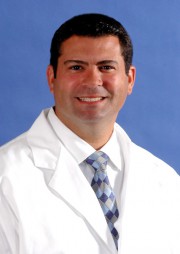
Dr. Presser
On average, smokers live 14 years less than non-smokers and one in six will be diagnosed with lung cancer. Approximately 70% of smokers say they want to quit, but success rates vary, depending on whether they try quitting on their own or undergo treatment. The long-term success rate of those attempting on their own results in only 3 to 7% being abstinent one year later. With optimal treatment, one-year abstinence rates can exceed 30%. Yet only 25% of smokers who try to quit seek help and even fewer use the most effective treatments.
Addressing Barriers to Quit — Nicotine is the primary barrier for quitting. It is a potent psychoactive drug that causes physical dependence, and in its absence, a smoker develops cravings and symptoms such as depressed mood, insomnia, irritability, frustration, difficulty concentrating, restlessness, and increased appetite or weight gain. In addition, smokers become conditioned to associate the pleasurable effects of tobacco use with environmental triggers such as their morning coffee, an alcoholic drink, or the end of a meal. These factors need to be addressed ahead of time so smokers know what to expect and how to respond when factors or situations occur.
All smokers should be told that the fact they started when younger is not their fault. Many people appreciate this because they feel others see them “doing it to themselves.” Smoking ‘back in the day’ was as common as carrying a cell phone today, but we didn’t have the information we now have about the habit’s harmful effects. And let’s hope we don’t learn the same for cell phones!
Choice of Treatment — A combination of both behavioral and pharmacologic therapies are found to be most effective in promoting abstinence from smoking. Behavioral counseling may include direct patient clinician encounters, computer programs, text or phone, or group-based therapy. Pharmacologic treatment includes drug therapy such as nicotine replacement therapy (Bupropion or Chantix). Each of these medications has proven effective for those trying to quit smoking. Each has a different side effect profile and may be preferentially used in different patient populations.
Other treatments include acupuncture (although studies show acupuncture to be less effective than nicotine replacement therapy) and hypnotherapy, found in a meta-analysis to have potential benefits (although a systematic review of 11 randomized trials found insufficient data). Randomized trials among smokers employed at US companies found that financial incentive increased smoking cessation rates and smoke-free electronic cigarettes (which may or may not have nicotine) appear effective in providing the “smoking” pleasure.
We’re all going to die eventually, but why speed up the process by smoking? I tell my patients wanting to quit to buy a bag of lollipops (preferably sugarfree) and carry a picture of a loved one in their wallet. The lollipop satisfies the oral fixation and the picture of the loved one reminds them of the value of life. And anyone undergoing chest surgery realizes how detrimental smoking can be.
Where to start? Communicate with your clinician. Find the treatment that’s right for you. Set a quit date and stick to it! And be sure to follow up to address withdrawal symptoms and possible relapse.
Remember… the best thoracic surgeon is the one you never see.
Dr. Presser is a board-certified thoracic surgeon specializing in minimally invasive procedures. He is an advocate for prevention and encourages lung cancer screenings which are proven to save lives. He welcomes your questions and can be reached at 760.424.8224.














































Comments (4)
quitting smoking for a longer healthier life should be all the incentive anyone needs, but a little support goes a long way.
We agree, Kathy! Thank you for your note. We will make sure Dr. Presser receives it.
I couldn’t agree more! Unfortunately we Humans don’t respond well to things that don’t affect us immediately. Breaking bad habits and addictions that will be harmful in the years to come is tough. A little support does go a long way. Thanks
we have to be optimistic and deterministic to quit smoking the following instructions.http://bit.ly/HzAY6i